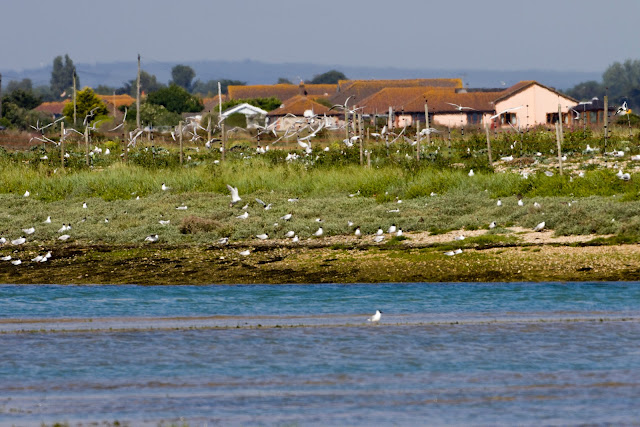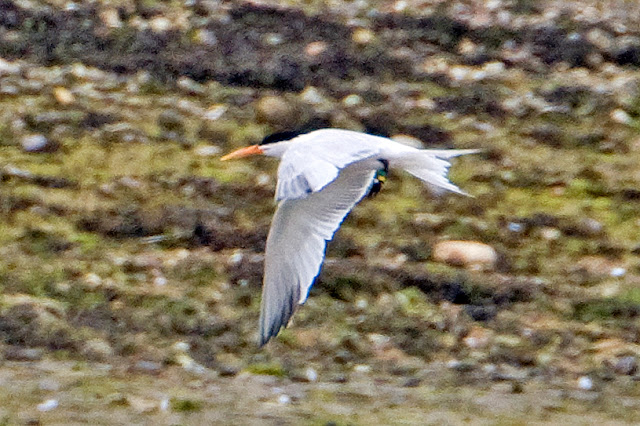I paid a visit to the Knepp estate today. I am not sure if I am a fan of the wilding project or not. To start with it is not really wild. It has more footpaths, tracks and signposts than any area of countryside that I know and I cannot help feeling that it is a manufactured environment to attract wildlife. Still, that is not necessarily a bad thing and they do need to generate an income to support the project they are working on.
In the end I went because it is now the premier site in the country for Purple Emperors. Counts of 140+ and 130 + have been reported there over the past couple of weeks. I had tried a few of my traditional sites for the Emperors but my only sightings were high in the trees with nothing coming down to the ground, so I decided to give Knepp a go.
I didn't see 140 but my count did get into double figures, just, I saw ten. Most were in the tops of the trees with only one coming down and then only for a few seconds.
 |
| Purple Emperor |
Perhaps more impressive were the numbers of Purple Hairstreaks. Record shots like the one below were easy to come by but what I really wanted was an open wing shot of a male Purple Hairstreak. It has been close to the top of my butterfly wish list for a long time. I didn't get one, despite hours of waiting for them to come down out of the trees, but my thanks to the guy that showed me his perfect picture. I really appreciated that. It even convinced me to waste another hour standing in the hot sun waiting for my chance to come along.
Plenty of other butterflies about particularly if you like Meadow Browns.
 |
| White Admiral |
 |
| Large Skipper |
 |
| Marbled White |
 |
| Small Skipper |
There were also a number of Silver-washed Fritillary about but they weren't stopping to have their pictures taken.
The free roaming animals often come as a surprise. This piglet following me down the path before disappearing into the undergrowth.
There were also some interesting Dragonflies. My first Southern Hawker of the year. I could have done with a cleaner background but still worth recording.
 |
| Southern Hawker |
There were also White-legged Damselflies, again my first of the year. I was surprised to see them so far from a river where they are usually seen. However, checking it does appear that they move away from the rivers during the maturation period.
 |
| White-legged Damselfly - immature female lactea phase |
 |
| White-legged Damselfly - male |
 |
| another immature female |
I did have one heart stopping moment. White Stork in the distance but then I realised there were a pair of them in a very well protected compound.
I couldn't find any reference to them on the web. I assume this is part of a re-introduction program but it would be nice to know if it is purely a Knepp initiative or is part of a national program. If they breed there is a good chance that the chicks will return to nest in the same area once they mature. Look out for nesting platforms going up over the next few years.
Note July26th - Statement from the Knepp Estate on their part in a White Stork rewilding project, (knepp.co.uk/white-storks). It is good to get an understanding of what is happening and an explanation for the White Stork Sightings around the area. Lets hope the project is a great success.
I should also apologise for straying off the public footpaths. My excuse - perhaps not quite enough of the signposting that I commented on above.








































